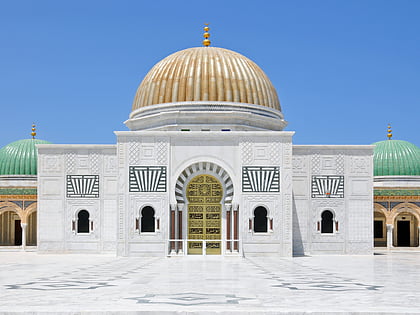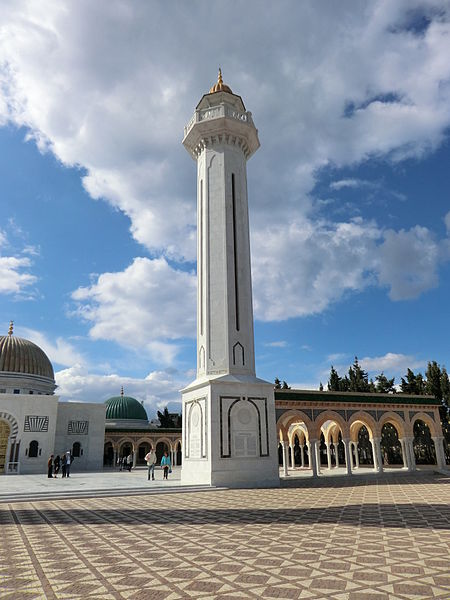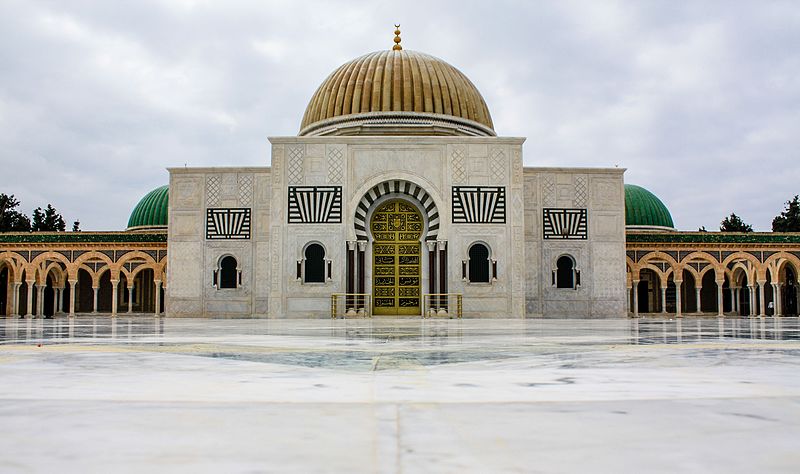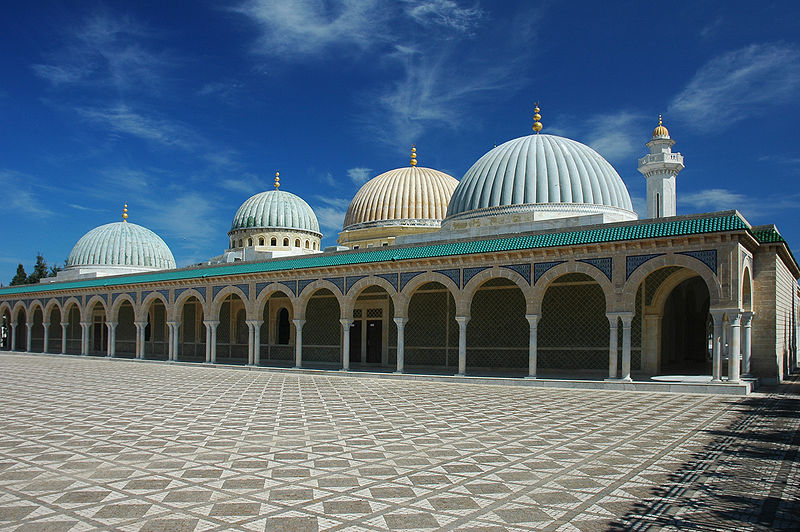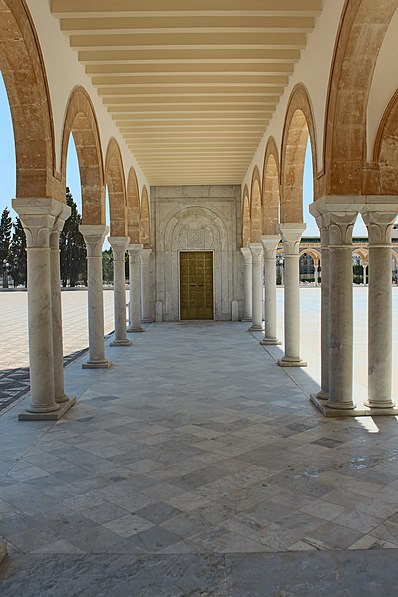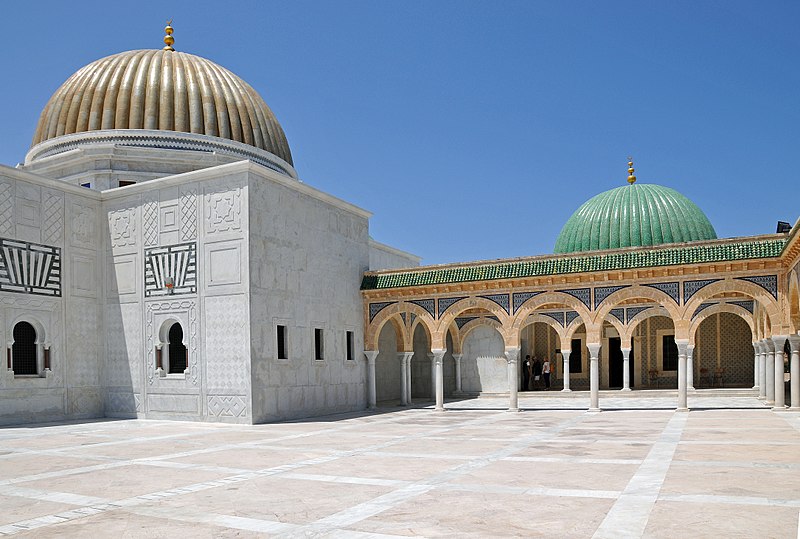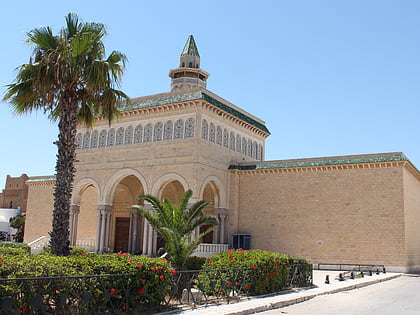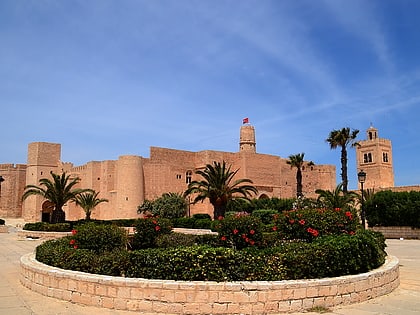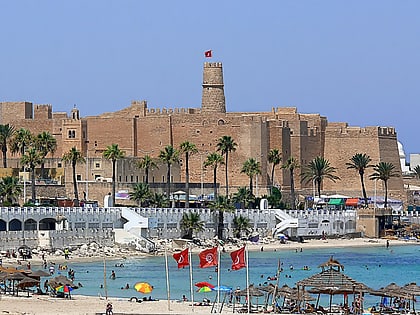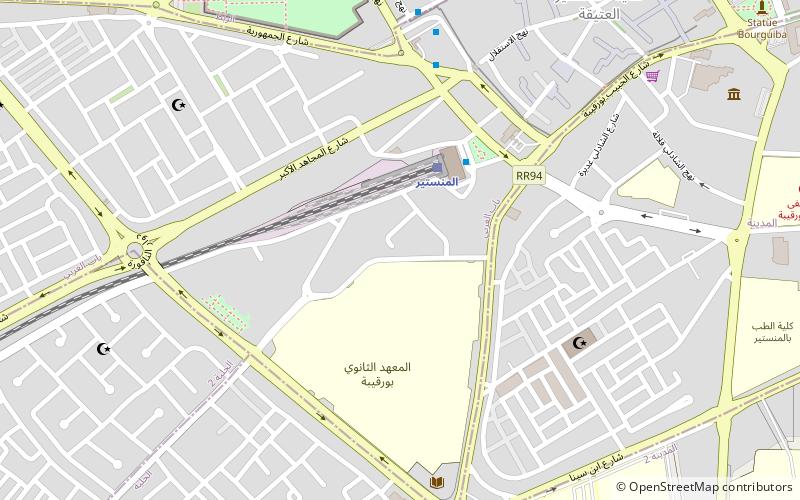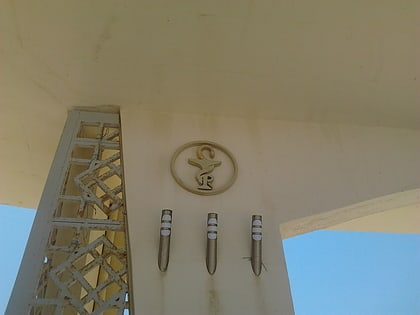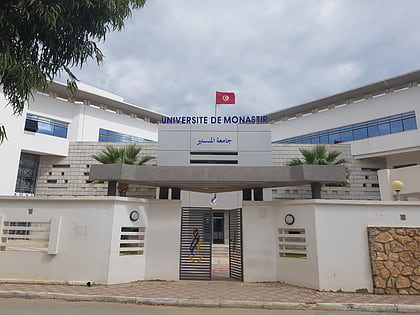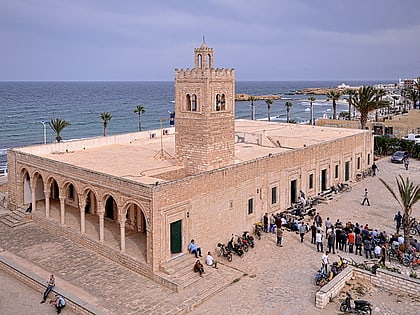Bourguiba mausoleum, Monastir
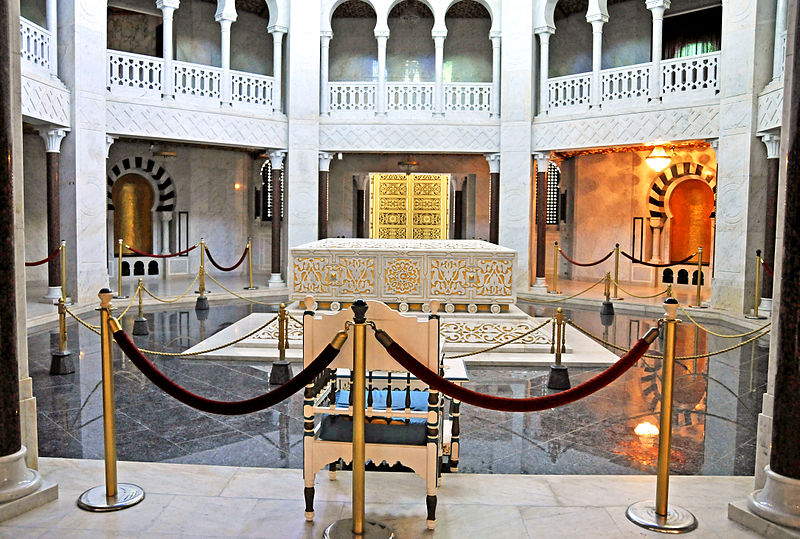
Facts and practical information
The Bourguiba mausoleum stands as a solemn testament to Tunisia's first President, Habib Bourguiba, located in his hometown of Monastir. This architectural marvel is a prominent landmark, encapsulating the rich history and cultural heritage of the region. The mausoleum was constructed following the president's wishes, with the intention of housing his final resting place.
Adorned with a golden dome and flanked by twin minarets, the mausoleum is a stunning example of modern Arabo-Islamic design. The opulent structure is situated within a meticulously maintained courtyard, part of a larger complex that includes a mosque and a meditative garden area. Its construction began in 1963 and was completed in 1968, while further expansions were added after Bourguiba's death in 2000.
Visitors to the mausoleum can explore the ornate interior, which features rich decorations, intricate tile work, and lavish chandeliers. The inner sanctum holds the tombs of Bourguiba and his family members. The mausoleum is not only a place of final repose but also serves as a museum that chronicles the life and achievements of the former president, who led the country to independence from French colonial rule in 1956.
Open to the public, the Bourguiba mausoleum provides a rare glimpse into the history of Tunisia and the man who shaped its modern identity. It stands as a symbol of national pride and is a significant site for both Tunisians and international visitors seeking to understand the country's past and its founding father's legacy.
Monastir
Bourguiba mausoleum – popular in the area (distance from the attraction)
Nearby attractions include: Hanafi Mosque of Bourguiba, Ribat, Musée d'arts islamiques, Ruspina.
